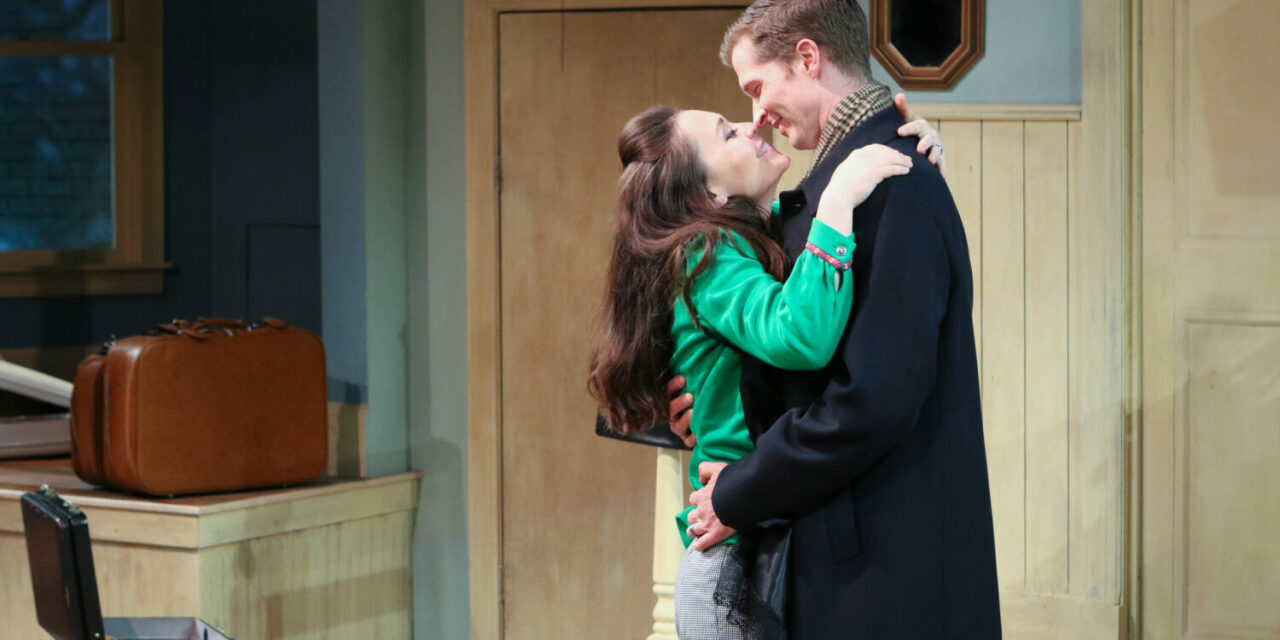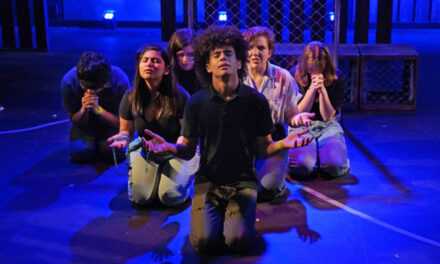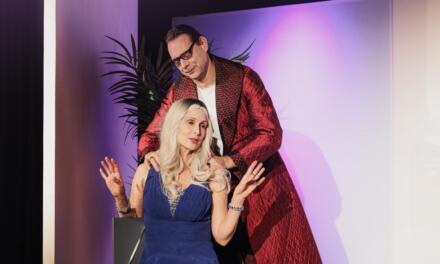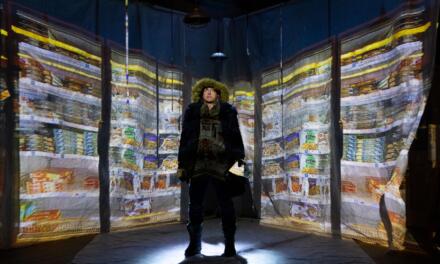Barefoot in the Park, by Neil Simon, now playing at Gloucester Stage in Gloucester, MA and directed by Shana Gozansky, isn’t attempting to venture into new territory. The production is straightforward, the plot simple. It’s the 1960’s and newlyweds Corie and Paul are moving into their brand new apartment in The East Village, Manhattan. The apartment is on the top floor up too many flights of stairs, the bathroom door won’t open all the way, and the bedroom is less of a room and more of a closet. It’s also February, there’s no heating, and a broken window is a portal for falling snow. Corie and Paul navigate the ups and downs of matrimony, with advice and interference from their older eccentric neighbor, Velasco—who lives above them in an attic only accessible via the couple’s bedroom window—and Corie’s mother, Ethel—whose attitude is as rigid as the board upon which she sleeps nightly.
The staging is simple: the Gloucester Stage is transformed into a cramped 1960’s New York Style apartment, in which the entirety of the play takes place (apart from an ending that finds the couple on the roof thanks to clever staging practices from Gozansky). There isn’t any real need to revisit this popular play by Neil Simon, and Gozansky isn’t saying anything new with the piece but the four actors are just so damn charming with each other and committed to the conflict of the everyday that this Barefoot in the Park production becomes a lovely memorable play.
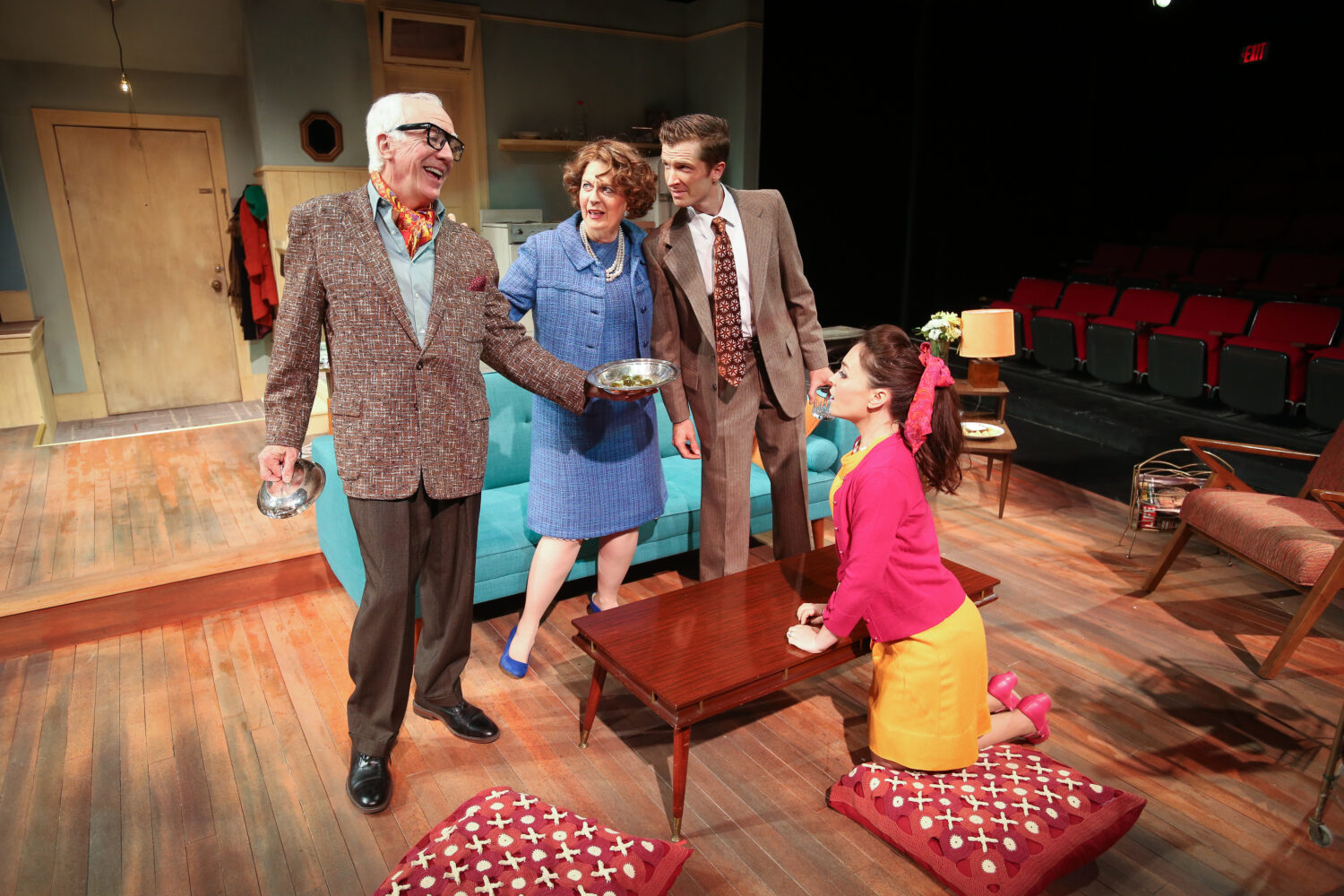
Barefoot in the Park. Photo Credit: Jason Grow
A large part of this production’s charm is derived from its cast of real-life couples. McCaela Donovan and Joe Short, who play Corie and Paul, are married, as are Paula Plum and Richard Snee, who play Ethel and Velasco.
Donovan and Short’s interactions and reparties are endearing and infectious. Interestingly, it’s their chemistry that leads to problems in this production. A key obstacle in Barefoot in the Park is that the free-spitted Corie is a natural opposite of the more conservative Paul, which leads to a huge fight in which the couple questions the viability of their marriage. This brawl is wonderfully honest: it personally triggered deep memories of my own midnight fights with significant others, aware that sleepiness colors anger and passion. However, Donovan and Short are just too compatible with each other on stage to justify this clash of opposites. Gozansky wisely stages this fight as a temporary hiccup, but I was missing any sort of real stakes and worry whether this young couple could survive. This play is dramatically centered on this “Odd Couple” type relationship (not coincidentally, Neil Simon wrote, The Odd Couple two years after Park) and this particular production wasn’t quite able to capitalize on it.
Likely due to their 40 years of marriage and of working together, Plum and Snee were the more fascinating couple to watch. Their characters were just so different and it was truly wonderful (while still being believable) to see these two come together and mature even in their characters’ older age. A standout scene between Plum and Snee has the flamboyant Velasco attempting to introduce the anxious Ethyl to an exotic, slimy, foreign dish. The obstacle was silly—if you don’t eat these now, it’ll lose the flavor!—and Plum and Snee’s physical work and commitment generated a constant stream of laughter from the audience.
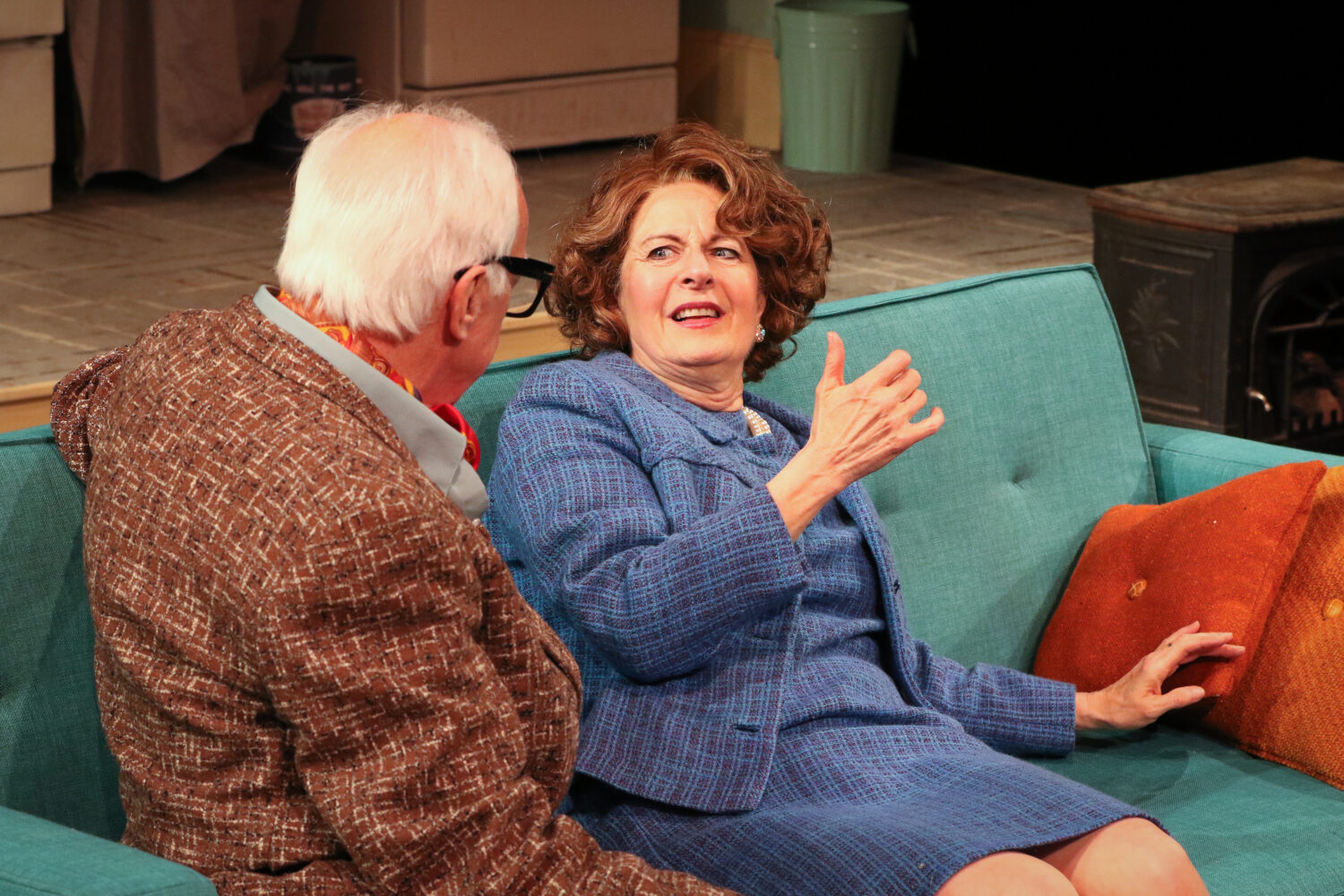
Barefoot in the Park. Photo Credit: Jason Grow
This production of Barefoot in the Park stresses the actors’ marriages in the marketing. Although worried that this would prove to be gimmicky, I found that this casting choice allowed for familiarity and nuance (especially between Plum and Snee) while transforming an otherwise traditional narrative into truth and humor. The production isn’t doing anything new, but it is a well-directed, well-acted show that tightly converges upon both the absurdity and the power of love.
This post was written by the author in their personal capacity.The opinions expressed in this article are the author’s own and do not reflect the view of The Theatre Times, their staff or collaborators.
This post was written by Rem Myers.
The views expressed here belong to the author and do not necessarily reflect our views and opinions.

